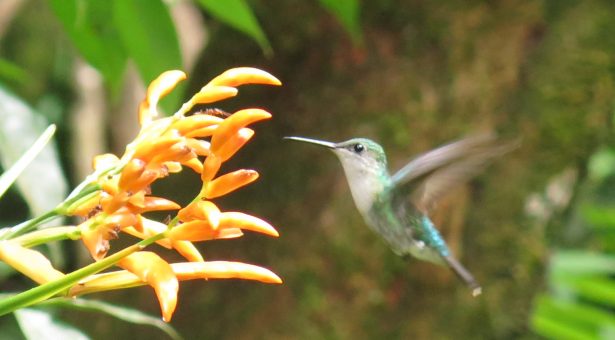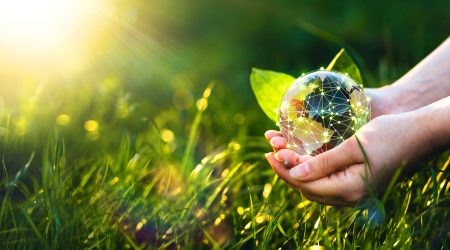How plants use scent to attract pollinators

The vast majority of flowering plants rely on animal pollination to spread their pollen to other individuals of the same species.
But how do plants attract those pollinators, and how do they make sure their pollen gets to the correct species in order to be effectively spread?
We sat down with new Group Leader Dr Kelsey Byers to find out;
“Flowers use many traits to influence animal pollinator visitation, including colour, shape, and scent. By making sure that the “right” pollinators visit in the right way, plants can ensure that their pollen is successfully transferred.
Of course, one way they do this is by looking colourful and enticing, which Professor Enrico Coen and his group are doing so much work to understand.
We are a very visually oriented species so it’s easy to forget that many animals have better noses than we do and that floral scent is also vital.
At its core, my research focuses on the evolution of floral scent in different flowering plant species.
I’m particularly interested in understanding how floral scent has evolved across larger groups of species – genera – and how it has driven the evolution of different pollination systems, i.e. the relationships between plants and their pollinators.
Ultimately, I’d love to know whether floral scent plays a major or a minor role in this relationship compared with other floral traits, and whether that changes in different groups of flowering plants.
To do this my group will study the evolution and diversification of floral scent at a wide range of scales, from genus-wide evolutionary patterns (lots of species) to floral scent evolution of pairs of species with different pollination systems (e.g. hummingbird versus bumblebee).
I’m joining the John Innes Centre from the University of Cambridge, where I was working on a group of tropical butterflies in the genus Heliconius, known as passion vine or longwing butterflies).
Although my background is in botany, I wanted to take some time to work with insects like butterflies because they are important pollinators of many flowering plant species.
For example, butterflies communicate with potential mates in various ways, including colourful wing displays and using special scents called pheromones, produced primarily by male butterflies.
While at the University of Cambridge, my colleagues and I studied how butterflies sense these pheromones with their antennae; how they behave in response to pheromones; and how these pheromones are produced genetically.
We think that these pheromones may be important for butterflies to recognise whether they are responding to the ‘correct’ species when it comes time to find a mate.
I’m excited to work at the John Innes Centre for a variety of reasons. The first and simplest is that I love plants.
It’s been great talking with colleagues here and not having to explain some of the basic – and even advanced – things I’m interested in. The fact that colleagues here know about terpene synthases (one of the main ways plants make scent) is amazing…
I’m also very excited to be joining a place where diversity in science is such a priority; as a disabled queer (asexual) person I’ve found the John Innes Centre to be very welcoming and inclusive of my access needs.
The academic calibre here is also just frankly great, folks are friendly and collaborative, and the facilities available are perfect for my scientific needs too.
Starting my own group is the culmination of a long journey.
I’ve wanted to be a scientist since before I can remember. My parents are all scientists, two of them in academic research, and they encouraged me in my curiosity from an early age.
I grew up in the woods behind my house, as well as hiking in the mountains where one of my study systems grows, and as a consequence plants and nature have always played a huge role in my life.
I did an undergraduate degree in biology, then took a year off as a Research Technician in a microarray lab to make sure I really wanted the academic life. From there, I decided I wanted to study organismal biology, and ended up doing a PhD in plant-pollinator interactions and floral scent evolution, and feel I’ve ended up in exactly the right area of research.”



